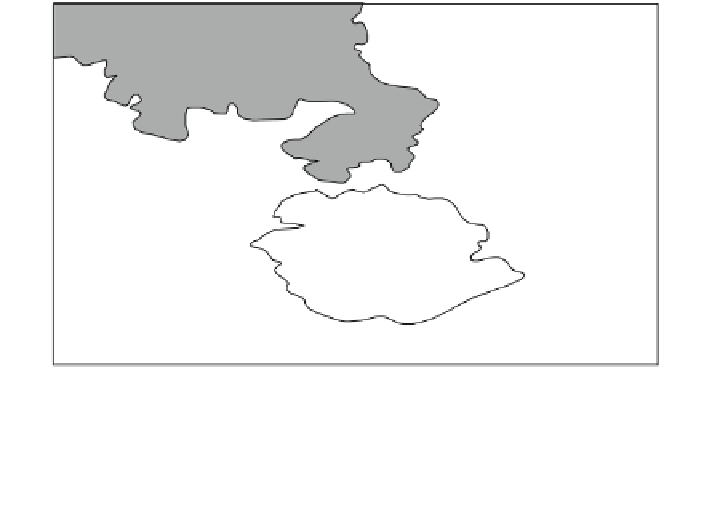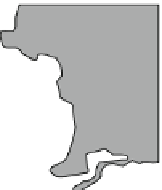Geology Reference
In-Depth Information
4.10 K-Rich Feldspathoidal Rocks from Colima, Mexico
Colima (19
W, Fig.
4.30
) is a composite volcano located towards the
western part of the Mexican volcanic belt and to the south of the Colima graben.
Although the eruptive lava
°
34
′
; 103
°
36
′
flows of Colima are andesitic, there are seven cinder
cones towards north of the main volcanic centre. The cones are constituted of
bedded ash, scoria and bombs. There are also lava
flows of basanites, which are
essentially nepheline-normative (Luhr and Carmichael 1981). There are also leucite
basanites containing modal leucite and analcite; these rocks have been termed
minettes and monchiquites. All the rock types are constituted of olivine, augite and
chromite. The basanites are characterized by the presence of labradorite, Titano-
magnetite and glass. The leucite basanites are constituted of plagioclase, sodic
sanidine, leucite, titanomagnetite, apatite and Ti
Ti-F-rich phlogopite. In the minettes
phlogopite is present both as phenocryst and groundmass minerals. Other
groundmass phases include apatite, labradorite, anorthoclase, albite
-
rich sanidine,
analcite and titanomagnetite. Allan and Carmichael (1984) described a phlogopite-
and kalsilite-bearing ankaratrite from a locality 25 km north of Colima. This rock is
characterized by phenocrystal phlogopite in a groundmass of diopsidic pyroxene,
nepheline, kalsilite, titanomagnetite, phlogopite, analcite, zeolites and glass. The
estimated ages of the cinder cones are between 1,500 years and >20,000 years.
-
10km
Besanite and minette
lavas and scoria
Celime and esitic
lavas & pyroclastics
Basaltic and andesitic
volcanics from other volcanoes
Upper Cretaceous(?)
limestones
Recent sedimentary
rocks
Fig. 4.30 Colima volcanic complex (after Luhr and Carmichael 1981)
























Search WWH ::

Custom Search